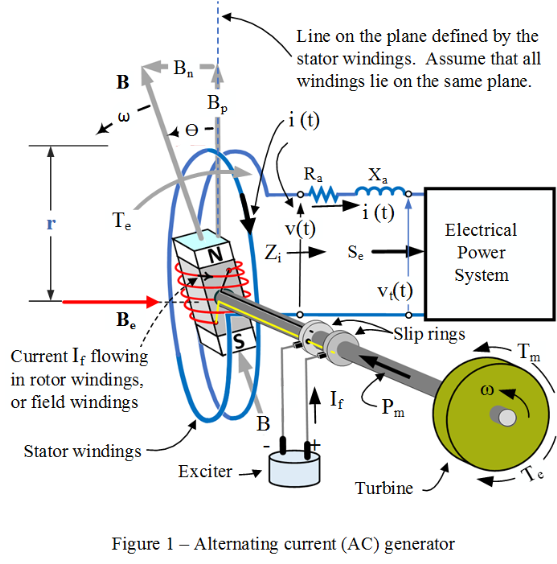A simple AC Generator
Frequency Responses > Accelerating Power
The rotating masses of the generators and motors on the system store kinetic energy. The amount of this stored energy is proportional to the system inertia M, and, therefore, the larger the M the larger the kinetic energy stored. Following a disturbance that results in a generation loss of an amount equal to ΔP, the frequency starts to decay and this results in the release of the stored kinetic energy in the form of power which is referred to as Inertial Response. This response, consistent with D’Alambert’s principle, is given by the following equation:

Where:
M = System inertia (angular momentum) in J-s/rad
ω = System angular speed in rad/s
ΔP = Accelerating power which, at time zero-plus, equals the amount of generation lost which is the same as the excess load.
The expression on the left hand side of equation (1) represents the Inertial Response power which, therefore, is proportional to M and the frequency rate of change.
The remaining portion of this page is develop an expression for the accelerating power that proves that only the component of the electrical current that is in phase with the induced voltage in a generator contributes to the calculation of the accelerating power. Figure 1 shows a sketch of a simple AC generators that highlights the electromagnetic principles involved.


In the page “Torque on a Current Carrying Loop in a Magnetic Field”, it is established that the torque that results from two interacting magnetic fields, such as Be and B in Fig. 1, is given by the product of the two magnetic fields times the sine of the angle between them and times a dimensional constant K. Accordingly, with reference to Fig 1, the electric torque Te that counteracts the turbine torque Tm in Fig 1, is given by:

